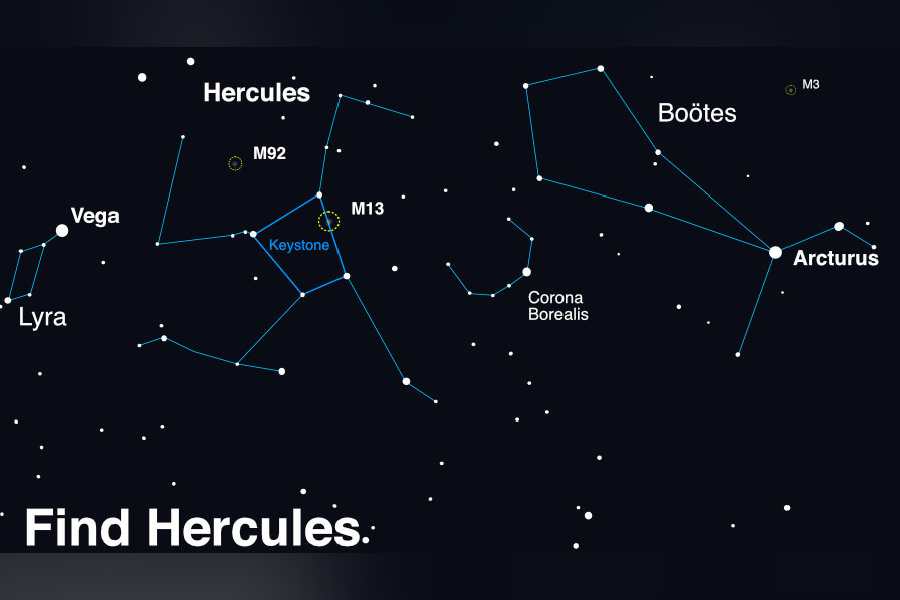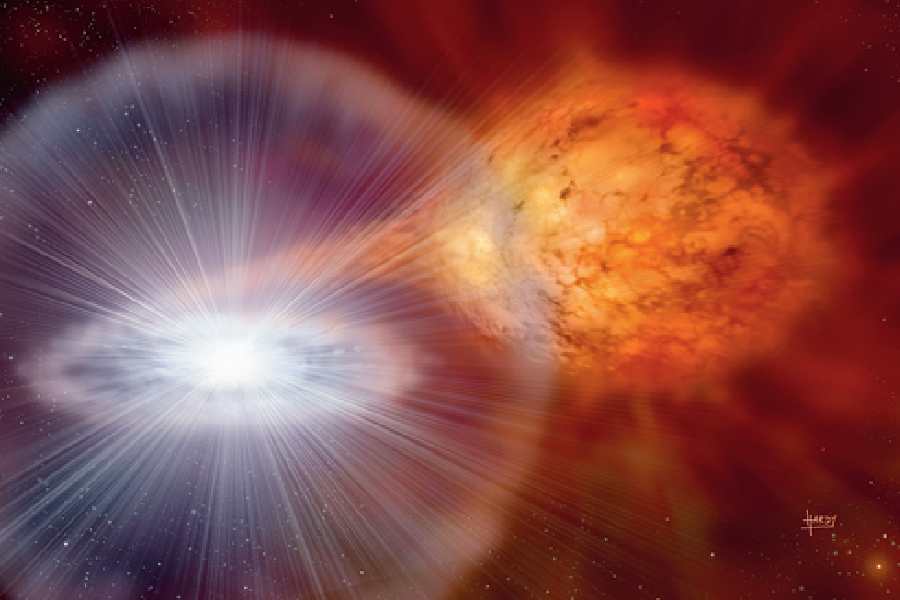Imagine looking up at the night sky to see a star so bright, it's almost like a second North Star. This isn’t from a storybook; it's a real event about to happen, visible without any special gear.
This year, the night sky is set to be adorned with a nova outburst, visible without the need for telescopes, presenting a unique chance for enthusiasts to witness this rare astronomical event, NASA said in a statement.
Tucked away in a distant corner of the universe, about 3,000 light-years from Earth, is a star system known as T Coronae Borealis, or T CrB for short. It’s a star duo that's gearing up to put on a dazzling light show, the likes of which only happens roughly every 80 years.
The last time this event occurred was way back in 1946, and now it's expected to happen again sometime between February and September 2024.
On a normal day, T CrB is too faint for us to see without a telescope. But when it bursts into a nova, it will suddenly become as bright as the most famous stars we know, visible to anyone looking up at the right part of the sky.

A conceptual image of how to find Hercules and his mighty globular clusters in the sky created using a planetarium software. Look up after sunset during summer months to find Hercules! Scan between Vega and Arcturus, near the distinct pattern of Corona Borealis. Once you find its stars, use binoculars or a telescope to hunt down the globular clusters M13 and M92. If you enjoy your views of these globular clusters, you’re in luck – look for another great globular, M3, in the nearby constellation of Boötes. NASA
This represents a once-in-a-lifetime viewing opportunity, as according to NASA's statement on their website, the nova outburst occurs approximately every 80 years.
This bright phase will last for several days, making it a spectacle not to be missed. After that, it might fade away and not be as easily visible again for another 80 years.
So, where should you look to catch this rare event? There's a constellation called Corona Borealis, also known as the Northern Crown, which is your ticket to finding T CrB. It looks like a small, semi-circle of stars and sits in a part of the sky near other star formations named Bootes and Hercules.
The best time to look up is after sunset, especially during the summer months. Even if you’re not familiar with finding constellations, this is the perfect opportunity to start, as spotting T CrB’s brightening will be a thrilling reward.
But why does this happen? Without diving too deep into complex astronomy, imagine two cosmic dance partners - a white dwarf and a red giant star. They are so close that they share material between them. Over time, this interaction leads to a spectacular explosion, which is what lights up the sky in a nova event. It’s a rare and beautiful reminder of the dynamic universe beyond our planet.
Typically, these twin stars shine at a magnitude of +10, making them invisible to the naked eye under normal circumstances. But, when they flare up during the outburst, their combined brightness will soar to a magnitude of +2. This level of brightness brings them on par with the North Star, Polaris, as per the announcement.
T CrB's impending nova outburst is a rare occurrence, one of only five recurring novae in our galaxy, says Nasa. This event is the result of a binary system dance between a white dwarf and a red giant. As the red giant sheds its outer layers, the white dwarf gathers this material, leading to a thermonuclear reaction on its surface. This explosive event is what we witness as a nova from Earth.











